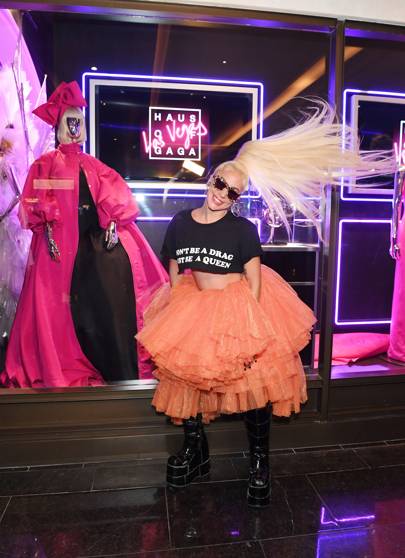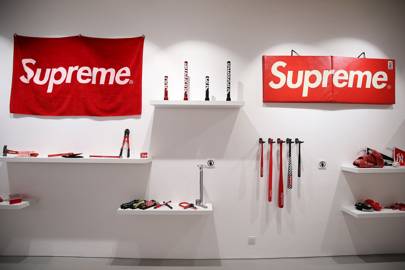For decades, a brand’s only priority was to create the best possible product at the most competitive price to ensure sales. But as consumers develop a more comprehensive understanding of issues like sustainability, authenticity and transparency, brands and retailers are being forced to change the way they sell in order to survive.
This change in consumers’ attitudes has a term — “new consumerism” — coined by research firm Euromonitor. “[Its] about today’s consumers reassessing their priorities and increasingly asking themselves what they truly value,” says Sarah Boumphrey, Euromonitor’s global lead of economies and consumers. “[And] conscious consumption replacing the conspicuous consumption of yesteryear.”
As customers reassess their priorities and question what they truly value, BoF outlines the 10 factors that define new consumerism, and what this change in shopping habits could mean for fashion brands and retailers.
1. Provide Transparency Into Your Business Practices
The modern consumer’s knowledge of environmental issues and working conditions means they respond to transparent business practices. Reformation, a Los Angeles-based label, takes pride in the sustainability of its vintage-inspired designs.
Transparency is now more of an expectation than an option, says Reformation founder Yael Aflalo. “I think that the millennial generation is really starting to push the boundaries of traditional fashion retail and driving demand for honesty and transparency for the products they purchase,” she says.
Revealing information about business practices allows companies like Reformation to engage with customers in a new way, opening a dialogue and creating a different, more honest brand experience, a far cry from global conglomerates that have traditionally kept such information under wraps.
2. Demonstrate Authentic Brand Values
Brands need to demonstrate a level of authenticity by offering products that are in keeping with the company history and culture. “We think this very much coincides with the rise of experience economy. As life becomes a paid-for experience, people increasingly question what is real and what is not,” says Joseph Pine, author of “The Experience Economy,” which explores the next phase of consumerism after the service economy.
This can be seen at brands like Burberry, which sticks very closely to its values of British heritage and craftsmanship, and its core product of trench coats and scarves. “Increasingly [consumers] don’t want to pay for something fake, they want the real from the genuine. And so authenticity is really the new consumer sensibility,” says Pine. “It is the primary buying criteria by which people choose who to buy from and what to buy.”
3. Create Sustainable Processes
A demand for more sustainable materials and production methods is a key hallmark of new consumerism, according to Euromonitor, and one that inspired Aflalo to set up Reformation four years ago.
“Our customers respond very positively to our sustainability efforts, and help motivate and drive us to keep doing better,” says Aflalo. “Some are incredibly passionate, and want to be informed — they want to know all of the details of our supply chain and operations, and really do a deep-dive.”
UK-based fashion label People Tree says it aims to be 100 percent Fair Trade throughout its supply chain. The company does this by purchasing Fair Trade products and materials from suppliers in the developing world. It also makes efforts to protect the environment and use natural resources sustainably.
4. Invest in Retail Technology
Rapid developments in technology have raised consumers’ expectations online. A shopper now demands a high level of service, speed and a unique experience with just one swipe of a finger.
“People expect some brands to be there at the touch of their fingers. Brands that they really care about, brands that they want a relationship with, those are the ones that are basically in their queue,” says Pine. “That they want to be there so that at a moment’s notice they can call them into speed and say, ‘Ok, provide me with what I need.’”
On the flip side, a brand might be marginalised by consumers if it doesn’t adapt its business model to include web, mobile and social retail.
5. Help Customers Achieve Personal Goals
Helping consumers achieve their health and wellbeing goals is another strategy that brands are implementing in line with new consumerism.
By staging experiences that help people become fitter or more mindful, a brand can become a key element in helping consumers reach their goals.
Nike, the world’s largest sportswear maker in terms of revenue, regularly stages local customer experiences like running clubs. “[Consumers] want to be healthier, they want to have a more satisfying life, they want to have a happier life, they want to have greater well-being and increasingly they look to companies to be able to help them achieve that,” says Pine.

6. Price Your Products Competitively
Constant discounting from retail brands has altered consumers’ attitudes towards value and consumption. In the age of new consumerism, the customer has come to expect a lower price.
Direct-to-consumer basics brand Everlane addresses this demand by sharing a breakdown of how much each product costs to manufacture, and what the mark-up would be if it had been sold at a third-party retailer.
“In order to save your money and your time for these experiences, you want to buy goods at the cheapest possible price,” says Pine. “You want that thrift and at the greatest possible convenience, so you are saving both money and time.”
7. Provide Efficient Services
The modern consumer is faced with endless choices, so products and services that help save them time have become more appealing. “Buying time is increasingly an option for today’s consumers,” says Euromonitor’s Sarah Boumphrey. “This is about more than just convenience, but increasingly about outsourcing tasks. Time has become a luxury in today’s connected world.”
US start-up Stitchfix, for example, aims to replace clothes shopping for the time-poor. Customers fill out a style profile, from which an algorithm and stylists choose and mail out a selection of items on a regular basis.
8. Deliver Experiences to Drive Sales
The rise in online retail means that retailers must work harder than ever to get shoppers into brick-and-mortar stores. Events and the creation of experiences have become crucial tools in helping brands connect with customers on a deeper level.
“Today we are in an experience economy,” says Pine. “Experiences are memorable [and] engage each individual in an inherently personal way and that’s what people desire today.”
This can be seen throughout the fashion industry, from British Vogue’s annual festival, which brings the magazine to life for readers, to Burberry, which capitalised on the press momentum from its recent London Fashion Week show by opening its Maker’s House venue up to the public and staging talks and workshops that relate to its new “see now, buy now” collection.
9. Embrace the Sharing Economy
The rapid growth of US fashion rental service Rent the Runway — which launched in 2009 and now has 5.5 million members — is clear evidence of the way new consumers have embraced temporary ownership.
“This is all about supply and demand and connecting people and businesses with the resources to those that want them,” says Boumphrey. “It removes market inefficiencies, empowers consumers and has disrupted or has the potential to disrupt, a wide range of sectors.”
Indeed, as more consumers become accustomed to the idea of sharing goods, the desire to actually own items may dampen demand for luxury trend-led fashion items.
10. Recognise Customers' Individuality
The rise in personalisation services speaks to the demand for products that help express one’s individuality. From monogrammed leather and denim at the likes of J. Crew and Madewell to Edie Parker’s personalised clutches and customers’ own quotes stitched across Poolside Bags’ wicker totes, the new consumer is eagerly seeking opportunities to put their own stamp on a product.
“We want to belong to one of more tribes, in which we feel like — yeah this is what we are about, that’s part of our identity. But yet we also want to recognise our own uniqueness” says Pine. “That is key for companies to understand.”































